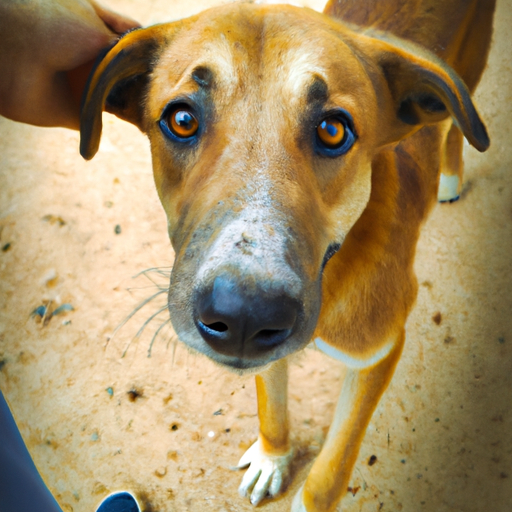As a caregiver, it’s crucial to understand the behavior of your furry friend. One common behavior is when your dog paws at your face. This action can be adorable, but it can also be puzzling. Let’s dive into the reasons behind it.
Understanding Your Dog’s Behavior
Your dog is a complex creature with emotions and instincts. Pawing at your face may mean different things in different situations. Here are a few possibilities:
- Seeking Attention: Dogs are social creatures who crave interaction. If your dog is pawing at your face, they might just want some playtime or cuddles.
- Expressing Affection: Dogs may use their paws to show love and affection, similar to how humans use their hands.
- Asking for Something: If your dog wants food or needs to go outside, they might paw at your face to get your attention.
The Role of Training
Training plays a significant role in a dog’s behavior. If your dog is pawing excessively at your face, it may be due to a lack of proper training or misunderstanding of boundaries. Here’s how you can address this:
- Train them with simple commands such as “No” or “Stop”.
- Reward them for good behavior and provide positive reinforcement.
- Consult with a professional dog trainer if the behavior continues.
The Impact on Health
While most of the time pawing is harmless, it’s important to keep an eye out for any signs of distress. Here are some symptoms to watch for:
- Excessive pawing
- Aggression
- Anxiety
If your dog exhibits any of these signs, it’s best to consult with a vet.
The Importance of Communication
Understanding your dog’s behavior is a key part of being a caregiver. When your dog paws at your face, they’re trying to communicate with you. By understanding what they’re trying to say, you can respond appropriately and strengthen your bond.
Practical Tips to Manage Pawing
Here are some handy tips to manage this behavior:
- Establish boundaries: Let your dog know what’s acceptable behavior and what’s not.
- Use positive reinforcement: Reward your dog when they show desired behavior.
- Seek professional help: If the pawing becomes a problem, don’t hesitate to consult a professional.
| Tips to manage pawing | How it helps |
|---|---|
| Establish boundaries | Sets clear expectations for your dog |
| Use positive reinforcement | Encourages good behavior |
| Seek professional help | Provides expert advice and solutions |
FAQ
Q: Why does my dog keep pawing at my face?
A: Your dog could be seeking attention, expressing affection, or asking for something.
Q: Is pawing a sign of distress in dogs?
A: While it’s usually a normal behavior, excessive pawing could be a sign of distress or a health issue. If you’re concerned, consult with a vet.
Q: How can I stop my dog from pawing at my face?
A: You can use commands, positive reinforcement, and professional training to manage this behavior.
Q: Is pawing a way for dogs to communicate?
A: Yes, dogs often use their paws to communicate with their owners. Understanding what your dog is trying to say can help you respond appropriately.



